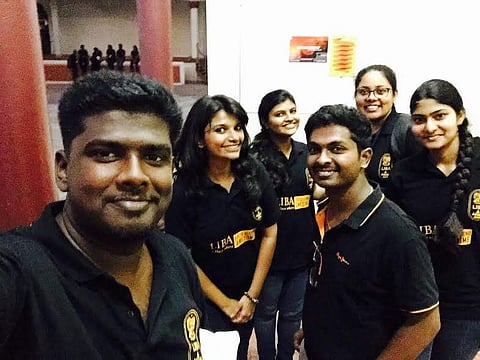

It started off as an assignment that would garner them an extra five marks on their exams, but a project on how to undo fluoride contamination in water for Indian villages by a group of students from Chennai's Loyola Institute of Business Administration (LIBA) has won the UK-India Social Innovation Challenge.
At the behest of their teachers, a team of six students at LIBA submitted a proposal for the UK-India Social Innovation Challenge, a UK- India Social Entrepreneurship Education Network (UKISEEN) initiative. The students were told that they would be given five marks extra on their exam if they submitted a proposal. While some students forgot about the deadline, a group of six students decided to seriously try their hand at the challenge. To their very pleasant surprise they ended up getting awarded the third place in the competition and won a cash prize of 500 pounds.
They worked on a project titled 'Providing defluoridated water to villages affected by fluoride contamination' which focused on two solutions to the problem — one being providing domestic water filter-based solutions and the other, providing defluoridated water for agricultural and irrigation purposes. The team proposed an idea that would make the original process less expensive by using a different medium to absorb the fluoride. The members of the team are Monica M, Praveen Devaraajan N, Divya Rupa Amalraj, B Antonette Rosalyn Deepika, Krithika Lakshmanan and R Rinaldo Roshin.
The idea struck Monica M, one of the participants after she came across pictures of children who had suffered skeletal deformation due to fluoride contamination in their villages. "I'm originally from Telangana and while watching Telugu news channels I came across horrific pictures of these people and I read up on them on the internet as well. I found that there was already a defluoridation process in place but I wondered if it was possible to do it for cheaper,"she explained.
During their presentation, the students mentioned that one lakh villages including 66 million people across 21 states were affected by fluoride contamination and 11.7 people were already crippled by the effect.
The business student then discussed the subject with a friend who works in a water treatment plant, who then put her in touch with another friend who had written a paper on using a new material to defluoridate water - fly ash. "But this was still only a paper presentation. We needed to find out if this was even possible. However, we are only business students and don't know much about the science of it all, so we asked our Chemistry department to help," Monica explained.
Fortunately for them, the experiment was a success, Monica along with five of her team mates then sat down to build a business model for the new process. The students found that fly ask worked out to be a much cheaper absorbent than the previously used activated alumna in the defluoridation process which made the process a capital intensive one. They found that water with 9 ppm fluoride was easily reduced to 1.5 ppm which is the safe level.
In their business plan,the students proposed using a simple villlage hack — a domestic pot filter and an overhead tank — for the former, the team suggested that the panchayats and local government bodies would contribute and set up the tank. The preparation of the media or the absorbent was priced at a mere 9 rupees per kg, making it easily marketable to the local panchayats. In their research, the students claimed that they found that 75 percent of the funds allocated under the National Programme for Prevention and Control of Fluorosis are unspent. The team even tied up with the Tamil Nadu Water Board for the project.
Finding a place in the top ten itself was a surprise so when the students didn't find their name as one of the winners when the results were released on March 23, they were not entirely disappointed, since not many Indian colleges had been able to win the challenge. But they were in for a shock when they were informed that the person given the third place belonged to an NGO and was then disqualified. "It was completely unexpected so it was a wonderful surprise," said an-over-the moon Monica.
On being asked about the future of this new process, Monica said that for now she and her team members were focused on the jobs they have to start in a few months time, "We have to put it on hold for now but we really want to ensure that people become aware of this process and implement. If someone is ready to fund us, of course we'll waste no time in trying our best to make it work,"she added.
